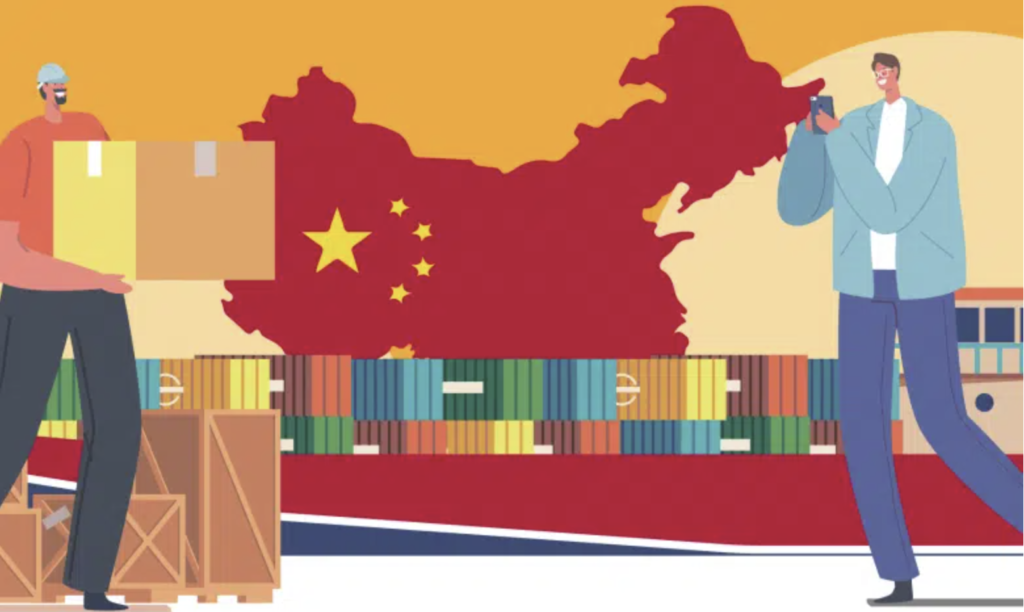Purchasing products from China can be a complex endeavor, especially for buyers who are not physically present. While China offers a vast array of suppliers, it’s crucial to make informed decisions and safeguard your purchases from potential scams. In this article, we’ll guide you through the process of buying in China, from supplier identification to secure procurement practices.
Steps to Buy in China
Purchasing from China involves several steps, and understanding this process is vital for successful procurement. Let’s break down the key stages of buying in China:
Step 1: Supplier Identification
Prospecting of Suppliers: Finding Chinese suppliers has become more accessible with online platforms like Alibaba and Made In China. However, it’s essential to carefully vet potential suppliers, as these platforms may have fraudulent listings.
Supplier Audit: To ensure supplier reliability, conduct a factory audit. A factory audit involves an independent inspection of the production site to determine if it can meet your requirements. This step is crucial in avoiding unpleasant surprises during production.
Step 2: Product Identification
Prototype: Once you’ve approved a supplier, ordering a sample is highly recommended. A sample allows you to assess product quality and ensure it aligns with your expectations. However, be aware that sample quality may not always reflect mass production quality.
Step 3: Mass Production
With an approved sample, you can proceed to place an order with your chosen supplier. Negotiate purchase conditions, including price, minimum order quantity (MOQ), payment terms, and production timelines. Once all terms are clear, production can commence.
Step 4: Post-Production Inspection
Product Inspection: Quality control is a critical step in purchasing from China. It involves evaluating whether the inspected product meets established specifications and requirements. Following inspection, you decide whether the goods are suitable for shipment or require corrections. Experts like Asiaction can conduct quality control inspections.
Packaging and Loading Supervision: Ensure that your order is correctly packed and loaded onto the chosen mode of transport. Supervision involves confirming quantities, checking the packing list, and randomly opening boxes to verify product conformity.
Step 5: Delivery
Select the mode of transportation for your goods—typically, sea freight is preferred for purchases in China due to its capacity, but air freight offers faster delivery at a higher cost. After choosing your transportation method, negotiate rates with freight forwarders and secure space for your goods.
In summary, the buying process in China is intricate and necessitates meticulous oversight of each step to ensure a successful procurement project. If managing these steps on your own seems daunting, you can enlist the services of a purchasing office in China, such as Asiaction, which offers a range of services from supplier search to complete order management, allowing you to focus on your sales.
Securing Your Purchases in China
To secure your purchases in China, consider the following control points:
1. Company Verification Before Placing an Order: Determine the reliability of your Chinese supplier before initiating work with them. Identifying a supplier’s credibility early can help you avoid potential issues.
2. Requesting Samples Before Production: Ordering a sample allows you to assess product quality and make an informed decision about whether to proceed with a particular supplier. Having a sample provides a safeguard against unexpected variations in quality.
3. Production Control Before Goods Depart China: Ensure that the goods conform to your specifications before they leave the supplier’s warehouse. You retain the authority to adjust the order if necessary, and the goods only leave China upon your approval.
4. Packing and Loading Supervision: Verify that your goods are loaded correctly into the chosen transportation container. This supervision process includes cross-checking quantities and random box inspections to confirm compliance with the packing list.
Securing your purchases is crucial because scams are a real concern, and the geographic distance can hinder effective communication and procurement management. Utilizing these control points helps mitigate risks and ensures a smooth procurement process.
Why Purchase from China?
Despite the challenges, there are compelling reasons to source products from China:
1. Wide Range of Options: China’s vast manufacturing industry offers an extensive selection of products in terms of quality, price range, product types, and minimum order quantities.
2. Competitive Prices: Despite global price increases for raw materials and transportation, China remains competitive in the world market. Its cost-effective manufacturing continues to be a major advantage.
3. Bulk Purchasing: Chinese factories are equipped to handle large orders, making them an excellent choice for bulk purchasing. However, be prepared for minimum order quantity (MOQ) requirements, which can be high.
4. Customization: China’s diverse supplier base allows for product customization. If you hold the intellectual property rights and patents for your product, you can collaborate with Chinese manufacturers to create tailored solutions.
Conclusion
Buying from China remains a viable and advantageous option when approached correctly. However, it is essential to understand and manage each step of the procurement process effectively. Whether you opt for self-guided procurement or enlist the assistance of a purchasing office like Asiaction, comprehensive control and informed decision-making are key to a successful purchasing experience. By following these steps and control points, you can navigate the complexities of buying in China and secure your procurement projects effectively.

